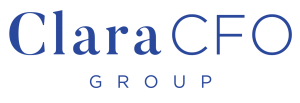
One of the most powerful vehicles for learning is a case study.
Why?
It’s simple, really. Case studies move us beyond “what ifs?” and into reality.
Today’s case study looks at one of the issues faced by many small business owners: the lack of complete and reliable financial data to support their operation and growth.
Let’s take a look at a challenge faced by one of Clara CFO Group’s clients, the solutions we developed in response, and the results our client achieved as a result.
The Client:
A design and fabrication company specializing in theatrical sets and experiential marketing. They have been running a successful business for over a decade serving some of the entertainment industry’s biggest names through design, consultation, and custom fabrication services.
The Challenge:
Although the business is well established, the client has never had accounting processes or procedures in place to optimize their finances and accommodate growth.
As a result, the client’s balance sheet and income statement lacked accurate financial data.
Without accurate data, the client was unable to gain clarity into the financial health of their business, putting them at risk for misinformed decision-making (and likely many sleepless nights).
Accurate financial statements allow a business owner to have a clear picture of the business at either a moment in time (captured on the balance sheet) or over a period of time (detailed on the income statement).
This client was cobbling together disparate pieces of data from other sources and, together with looking at their bank account multiple times each day, was trying to make informed decisions for the business.
Not surprisingly, the data they had didn’t tell the whole story. Add to that an enormous amount of room for human error and the panicked feeling of being out of control with the business’ money.
The net result was a very uncomfortable position for this business owner and an overwhelming sense of being out of control.
Solutions:
The client knew that something had to change, and that bringing in expert help would be the shake-up they needed. They had an in-house bookkeeper, but they knew that they needed more than bookkeeping, they needed strategy and guidance of a CFO. When they hired Clara CFO Group, they let us know we were being hired to “tame their money”, as they put it!
Once on board, we created an initial four-part action plan – one that allowed the client to feel as though their money just wasn’t being “tamed” … it was being harnessed to yield results.
The plan included:
- Identifying root causes.
- Cleaning up existing data
- Upgrading the company chart of accounts
- Improving processes
Identifying root causes
We discovered that previously-used bookkeeping methodology did not follow accounting best practices. Specifically, a double-entry system was not being used appropriately, causing ripple effects on the financial statements.
Cleaning up existing data
Our team reworked the accounting system, separating all transactions into the appropriate checking, savings, and credit card accounts. Once complete, the Bank Sync feature included with QuickBooks Online was enabled. This allowed automatic downloading of new transactions, which increased the bookkeeper’s efficiency (and eliminated many tedious data-entry tasks).
Upgrading the company chart of accounts
The basic chart of accounts provided by QuickBooks was being used with very little customization made for this business. For example, even though the company has multiple, distinct lines of business most income was lumped into one “sales” category.
Dramatic improvement was made to the chart of accounts by working with the client to tailor the data to include what was most important to him.
In addition, we simplified review of sales data by mapping sales items to the newly created revenue accounts, and clearly presented cost of goods sold separate from operational expenses.
The “projects” option in QuickBooks Online is now being used to allow the staff to code both income and costs (supplies and labor). In effect, this provides an abbreviated profit and loss statement for each customer project. With this data, the client can quickly determine the profitability of each project without using their former spreadsheet tracking system, saving time and eliminating the possibility of calculation errors.
QuickBooks Online has many options for customization. We did an interview with a QuickBooks Online setup specialist that you can check out here:
Improving processes
With revamped systems, enhanced reporting, and a sound basis of historical data being developed, we were able to establish solid month-end closing procedures.
This included the establishment of regular monthly meetings prior to month-close and the development of a customized closing checklist with responsibilities assigned to team members.
The cherry on top was the introduction of a digital filing system for receipts and bills, which is replacing the need for paper processes, paper storage, and tedious filing tasks.
The CFO led the client’s in-house accounting team directly using video calls, email, screen-capture technology, and phone calls. The use of digital tools made this a successful project even though the client and the CFO were in different states.
Results:
As a result of the changes we’ve implemented, our client has seen three key benefits:
- Better data is available for decisions
- Improved basis for forecasting
- Peace of mind
Better data
Process improvements have allowed for accurate and timely financial statements. The client can easily see at any time the outstanding balance on their line of credit and how much is in accounts receivable.
The client also has access to other key data points: their break-even point for the month, which of their business lines is trending, and where costs are running over budget.
In addition, the client was able to determine previous cost calculations for internal labor were incorrect. As a result, he has been able to adjust his rate, and is now bidding jobs more accurately to reach his profit goals.
Improved forecasting
Accurate forecasting requires accurate historical data. Now that a base of accurate historical data is being established, the client can forecast future expenses and future revenue.
With our help, the client has begun forecasting cash flow for the next 12 months, allowing us to anticipate dips before they happen. As a result, the client can make the necessary adjustments well in advance of anticipated challenges.
Peace of mind
With improved systems and processes now providing timely and accurate data, this business owner is able to make the best possible decisions for his business. No more wasted time; no more sleepless nights wondering about the state of his business.
Today, this client is feeling confident about the state of his finances, and empowered to make decisions that best support his business goals.
To gain results like this client, contact Clara CFO Group today to start “taming” your money!
Disclaimer: This blog and the linked videos are intended for educational purposes and should not be taken as legal or tax advice. You should consult with your financial professionals about your unique financial situation before acting on anything discussed in these videos. Clara CFO Group, LLC is providing educational content to help small business owners become more aware of certain issues and topics, but we cannot give blanket advice to a broad audience.






